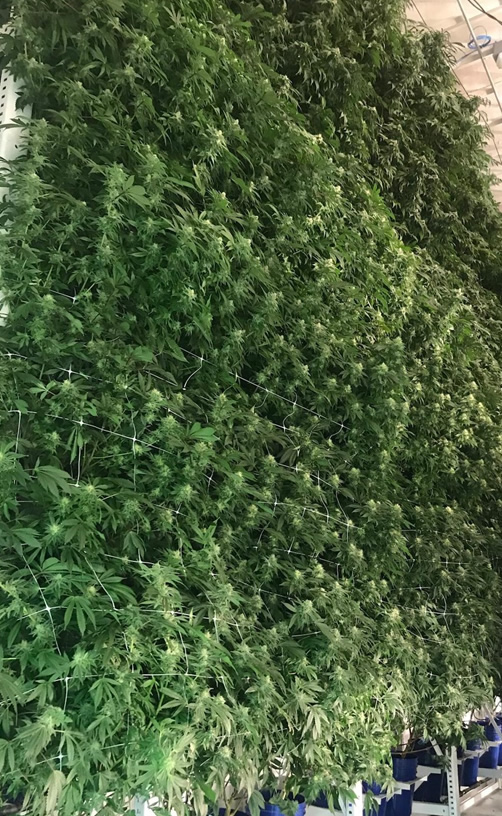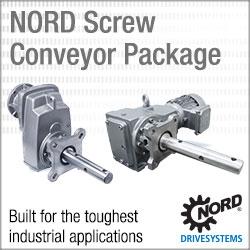True Vertical™️ optimizes the amount of plants per square foot by growing them literally vertically along a wall that can be 25 feet tall and 35 feet wide, or even bigger. This wall of canopy is facing another wall of canopy. Lighting is in between.
![Vertical Farming Methods Compared to Traditional Vertical Farming?]() Vertical Farming Methods Compared to Traditional Vertical Farming?
Vertical Farming Methods Compared to Traditional Vertical Farming?

Q&A with Chris Treville, Co-Founder | GrowEx
Can you tell us a little bit about how GrowEx came to be and why you've chosen to focus on the cultivation of cannabinoid producing plants?
Storex is our core business, which is a Dutch-based company. We specialize in agritech related to fresh fruit and vegetable storage; specifically we design and build industrial caliber storage facilities where millions of pounds of biomass (fresh fruit/veg) are stored prior to going to supermarkets worldwide.

The same tech can be used to efficiently control millions of grams of harvested cannabis flower. When we saw the cannabis industry taking off in Colorado we decided to visit indoor cultivation centers in Colorado and started taking notes on how to make them more efficient: less water use, less energy use, eliminating contamination from pests or mildew, and increasing yields and profitability. Thus, GrowEx was born.
Tell us about your vertical farming methods compared to traditional vertical farming?
We call it "True Vertical™️". Traditional vertical is a stacked horizontal system that can go 2-3 levels, or even higher sometimes. True Vertical™️ optimizes the amount of plants per square foot by growing them literally vertically along a wall that can be 25 feet tall and 35 feet wide, or even bigger. This wall of canopy is facing another wall of canopy. Lighting is in between. We also call these "faces". Not only does this method increase canopy per square foot print, but it also reduces labor and operational costs.
What makes GrowEx methods unique?
The background we have in controlled atmosphere, "CA", technology allows us to grow these plants in a gas-tight environment or, what we call, a "bubble" environment where all aspects of the air are precisely dosed and controlled. We also use very efficient lighting that allows us to bring the lights very close to the plants, avoiding wasted space. Therefore, True Vertical™️ farming + controlled atmosphere tech + efficient lighting + automated irrigation = consistent optimal yields and the lowest operational costs, which competes with outdoor farming and makes us very unique.
Editors Recommendation "Automation and Sensors in Hybrid Greenhouses"
Is this the most environmentally friendly way of growing?
It certainly is! We use up to 20 times less water, 10 times less land, 10 times less people, and 5 times less energy than traditional agriculture methods.
What is this “controlled atmosphere” technology and how does it work?
Essentially, it is the precise control, down to 2 decimal points, of all aspects of the air (like temperature, humidity, CO2, O2, N2, and ethylene). All of these factors have an impact on large amounts of live biomass. We can "dial in" what we want for specific results in yield and it is also the first line of defense against contamination, allowing us to have less than 1% crop loss. Traditional indoor farming can have up to 25% crop loss due to leaky buildings and contamination. Greenhouses are even worse at up to 50% crop loss. These crop loss numbers are usually not factored in the operational costs when companies announce how much it costs them to produce one gram of dry flower.
Mildew and pests are a big issue for indoor farming, can you share an example on how your “controlled atmosphere” is solving these issues?
.png) The first line of defense is a gas-tight building which is made of gas-tight walls, ceilings, floors, and doors. There is a special design and attention to detail to get this. This also allows a uniform and constant humidity and temperature which avoids mildew. If an insect comes in with a human or on some equipment or soil and starts to contaminate the room, then we have a patent pending algorithm to effectively kill all insects and their eggs within 24 hours without any negative long term impact on the growing plants. This is done without adding any chemicals or other gases not already present.
The first line of defense is a gas-tight building which is made of gas-tight walls, ceilings, floors, and doors. There is a special design and attention to detail to get this. This also allows a uniform and constant humidity and temperature which avoids mildew. If an insect comes in with a human or on some equipment or soil and starts to contaminate the room, then we have a patent pending algorithm to effectively kill all insects and their eggs within 24 hours without any negative long term impact on the growing plants. This is done without adding any chemicals or other gases not already present.
We heard that you have a goal of growing quality cannabis at .50 cents a gram? What is the current price per gram? Is your goal attainable?
We are currently at about 60 cents a gram and we have a path to 30 cents in R&D right now. Our goal is attainable and we will prove it in about 6 months with numbers coming out of our next facility, which we are currently building in Canada. This breaks down to about 15 cents in calculating labor, electricity, nutrients, consumables,and 15 cents for amortization / overhead, and about 10 cents for packaging.This is from clone to dry flower in bulk. Packaging is extra.
If you like this article you may like "LEDs Have a Growing Impact in Urban Farming"
The content & opinions in this article are the author’s and do not necessarily represent the views of AgriTechTomorrow
Comments (0)
This post does not have any comments. Be the first to leave a comment below.
Featured Product

